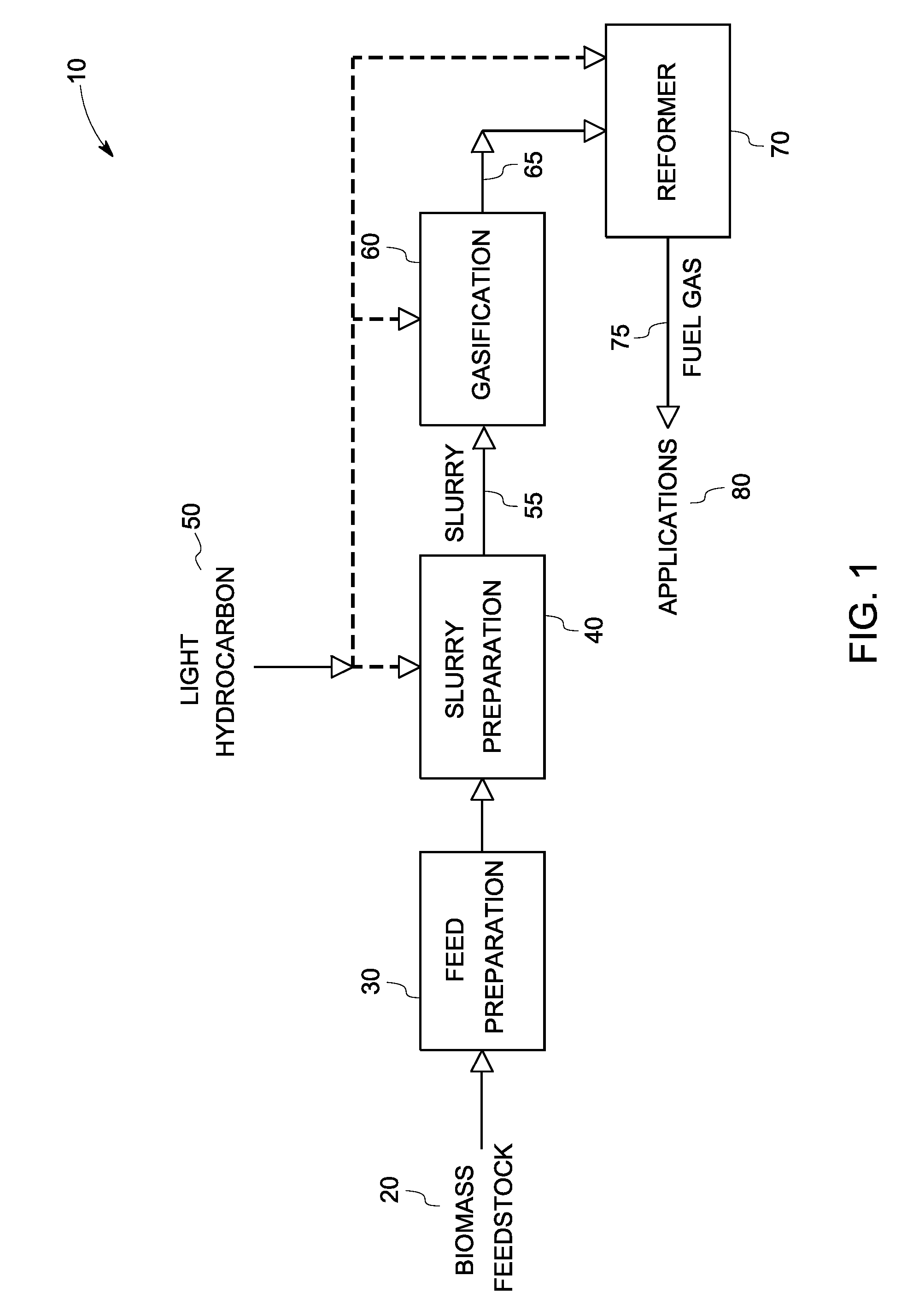Method of biomass gasification
a biomass and gasification technology, applied in the field of biofuels, can solve the problems of large amount of energy required for drying biomass, many difficulties encountered, and many operational difficulties of the process, and achieve the effect of efficient gasification of biomass, especially
- Summary
- Abstract
- Description
- Claims
- Application Information
AI Technical Summary
Benefits of technology
Problems solved by technology
Method used
Image
Examples
Embodiment Construction
[0017]As discussed in detail below, embodiments of the present invention describe a method for biomass gasification that allows for pressurized operation, with reduced tar formation.
[0018]Approximating language, as used herein throughout the specification and claims, may be applied to modify any quantitative representation that could permissibly vary without resulting in a change in the basic function to which it is related. Accordingly, a value modified by a term or terms, such as “about”, is not limited to the precise value specified. In some instances, the approximating language may correspond to the precision of an instrument for measuring the value.
[0019]Various steps in the process are represented in FIG. 1. The method of biomass gasification is generally shown as 10. Biomass feedstock 20 undergoes a feed preparation step 30, where it undergoes preprocessing. Step 30 may be an optional step in some embodiments. The pre-processed biomass feedstock 20 is then mixed with a light ...
PUM
 Login to View More
Login to View More Abstract
Description
Claims
Application Information
 Login to View More
Login to View More - R&D
- Intellectual Property
- Life Sciences
- Materials
- Tech Scout
- Unparalleled Data Quality
- Higher Quality Content
- 60% Fewer Hallucinations
Browse by: Latest US Patents, China's latest patents, Technical Efficacy Thesaurus, Application Domain, Technology Topic, Popular Technical Reports.
© 2025 PatSnap. All rights reserved.Legal|Privacy policy|Modern Slavery Act Transparency Statement|Sitemap|About US| Contact US: help@patsnap.com


